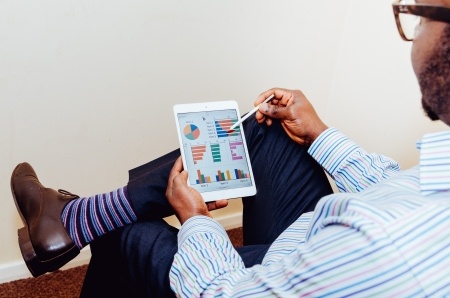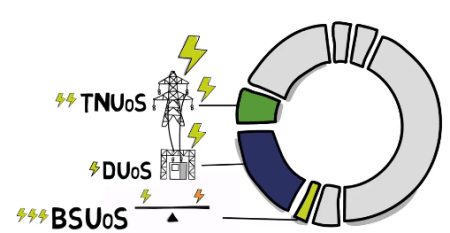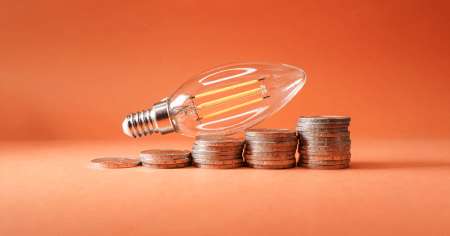
How to use your energy data
Knowledge is power
It’s cliché, but it’s true. Knowing the amount of energy you’re using, when, how, or even why, opens the doors for you to understand how to budget for it, how to control it, and how to reduce it.
First things first, how do you obtain your data?
- If you have an HH meter, your energy supplier will receive your usage data via your appointed Data Collector. You can view this data on MyBusiness.
- If your meters are NHH and you have a Smart or AMR meter, your data is automatically collected and sent to us and records consumption as frequently as every half hour. You can also view this on MyBusiness.
- If you have an NHH meter that isn’t Smart or AMR, your energy supplier won’t have any consumption data for you unless you give manual meter readings.
Why is your data important?
When it comes to your bills
Whenever you receive an energy bill, the amount you pay is based on how much energy you’ve used over that period.
- With Half Hourly meters or NHH Smart or AMR meters, typically your meter readings are automatically sent to your energy supplier, and your bill is based on those actual reads.
- But, if you have a Non-Half Hourly meter that isn’t AMR or Smart, you need to do this yourself or risk estimated bills.
Without at least some consumption data to base it on, and without knowing if you’ve made any changes to how you operate or use your energy in that time, even the best estimates can be way off – and this could mean you pay too much or too little for your bills. Whilst too little may sound great, it could leave you with a costly catch-up bill when you next provide a meter reading.
Trust us – it’s much better to give regular readings and keep on top of it.
And then there’s changes to your prices to consider
I’m sure earlier in the year you saw splashed all over the news a huge push for domestic customers to give meter readings on or around 31 March (when the domestic price cap was due to change).
The reason behind this is fairly simple, but can have a dramatic impact on bills – by giving a read as close as possible to when the prices change, your energy supplier has the information they need to know where in your usage your old prices should end and your new prices should begin. Underestimate the meter reading for that date and all the usage that wasn’t accounted for gets applied to your new prices. So it’s very good practice for you to give meter readings on or as close as possible to your renewals, when you agree a new tariff, or are subject to a price change (at home and at work)! If you’re HH, Smart or AMR – this is automatically done for you.
When it comes to your energy or carbon emission reduction objectives
How can you prove you’ve achieved your target of reducing your annual energy consumption by x%?
This is where meter reads come in. By providing regular meter readings, you’ll have the data to see how much energy was used. Depending on how often you give readings, you could break this down into how much is used in different seasons, during busy periods, or compare year on year. HH, Smart and AMR meters can give these as often as every half hour – giving you a huge amount of information to work with.
When you’ve got this information – the only limit to how you use your data is your own imagination.
- Planning ahead your budget based on cyclical patterns of usage and expected events
- Backing up increases in spend by referencing anomalies in consumption against busy periods or extreme weather conditions
- Justifying spend on energy efficiency initiatives by proving what they’ve saved
- And then using this data to support future investment cases.
Whether that’s to insulate a site, install EV charging points, or upgrade heating and lighting, it’s sensible to baseline consumption from the start. Having that data helps build the investment case but can also help target investments towards the areas with the biggest bang.
Ongoing monitoring will show if you’re achieving return on investment, but metering can also have direct impact on whether you achieve objectives. For example: a business didn’t achieve their aim to reduce consumption by 20% by investing in ‘intelligent lighting’. The business then arranged with the lighting installation partner to reconfigure the settings so that the objectives could be achieved.
How to give a manual meter reading
The more data the better. But at very least, we’d recommend giving meter readings every 6 months.
Here’s a couple of ways you can do that:
Via MyBusiness - mybusinessaccount.edfenergy.com
Or, if you're not registered for MyBusiness, you can do it through a form on our website at edfenergy.com/large-business/customers/meter-readings
How to get a Smart meter
Smart meters for your business, as well as for your home, can record more information than standard electricity meters. In fact, they can capture and store data about your energy use as frequently as every half hour. Smart meters also allow us, as your energy supplier, to collect this information directly via a remote connection. This means that where we receive meter readings from your Smart meter, we’ll no longer need to ask you for regular meter readings.
How to view and download your Smart consumption data through MyBusiness
In MyBusiness, you can view and download your HH meter and Smart meter consumption data from as recently as 3 days ago. This is different to your energy bills, which have a cut off date and so are a view of a point in time.
In the “Data Analysis” section in the sidebar, you can view and download the data of up to 4 MPANS at once.
Here you can choose to:
- graphically view consumption as a line chart of a bar chart,
- modify the granularity,
- set the date range (up to a year at a time),
- and choose the meters to review.
If you need to view more MPANs, you can use the dedicated “Data Export” feature (which you can find as an option under “Data Analysis”).
Here, similar filters can be used to export up to 350,000 records (equivalent to Half Hourly interval data of up to 20 MPANS for one year) at one time and download data direct to CSV or Excel.
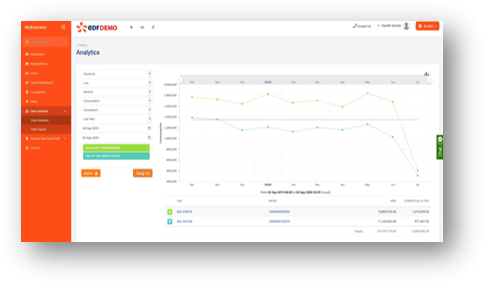
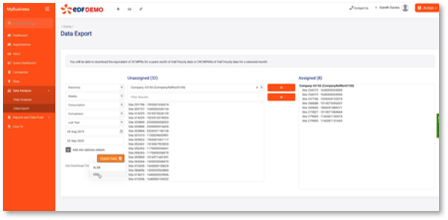
Sign up for updates
Get regular updates on our webinars, blogs and events, giving you insight into current issues, developments and trends from our leading energy experts.
Check out our latest webinars
What's more, you can watch them all again whenever you need on our webinars page.
